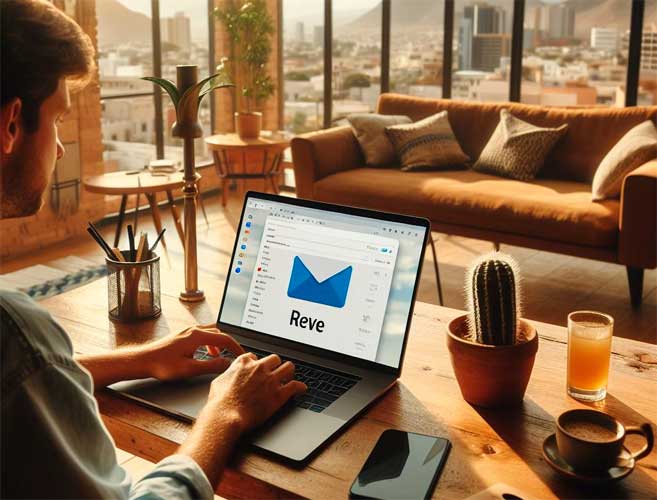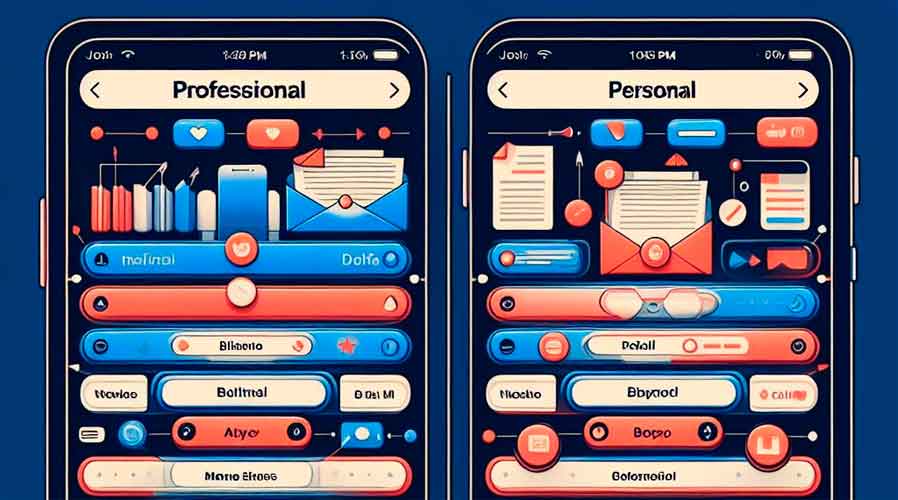Professional email address vs personal email address. In the digital age, email has become an indispensable tool for communication, both in personal and professional spheres. The choice of email address plays a crucial role in shaping how one is perceived online. This post delves into the distinctions between professional and personal email addresses, examining their defining characteristics and the pivotal role they play in effective online communication.
Importance of Email Communication
Email communication holds paramount significance in the contemporary digital landscape, serving as a cornerstone for various aspects of personal and professional interactions. The following points underscore the crucial role that email plays in our interconnected world:
- Efficiency and Speed: Email allows for swift and efficient communication, enabling the exchange of information across vast distances in a matter of seconds. This speed is instrumental in both professional settings and personal correspondence.
- Formal and Official Correspondence: In professional environments, email is the primary mode of formal communication. It facilitates the exchange of official documents, business proposals, and other critical information in a written and traceable format, contributing to organizational efficiency.
- Networking and Collaboration: Email serves as a vital tool for networking and collaboration, fostering connections between professionals, businesses, and individuals. It provides a platform for initiating partnerships, sharing ideas, and collaborating on projects, irrespective of geographical barriers.
- Documentation and Record-Keeping: The written nature of email communication lends itself to effective documentation. Important discussions, agreements, and decisions are recorded in a written format, offering a valuable reference point for future use and accountability.
- Global Communication: Email transcends borders, allowing individuals and businesses to communicate globally. This global reach facilitates international collaborations, trade, and cultural exchanges, contributing to a more interconnected and interdependent world.
- Flexibility and Convenience: Email provides users with the flexibility to send and receive messages at their convenience. This asynchronous communication style allows individuals to manage their time effectively and respond when it best suits their schedule.
- Personal Connections: In personal spheres, email enables individuals to stay connected with friends and family, regardless of physical distance. It serves as a platform for sharing life updates, photographs, and maintaining meaningful relationships over time.
- Job Applications and Professional Branding: For individuals seeking employment, email is a crucial component of the job application process. A professional email address and well-crafted messages contribute to a positive first impression, enhancing one’s professional branding.
In essence, the importance of email communication lies in its ability to facilitate effective, timely, and documented exchange of information, fostering connections and collaborations on both personal and professional fronts.
Professional email address vs personal email address
Professional Email Address
A. Characteristics
- Formality: Professional email addresses are characterized by a formal tone and structure. They avoid colloquialisms and maintain a level of professionalism suitable for business and official communication. The use of titles and proper salutations contributes to a professional demeanor.
- Clarity: Clarity is paramount in professional communication. A professional email address should clearly represent the individual or the business it belongs to. Avoiding unnecessary symbols or numbers ensures that the address is easily understood and remembered by recipients.
- Consistency with Business Identity: Professional email addresses should align with the business identity or individual’s professional persona. This consistency reinforces branding and helps establish a professional image. It often includes elements such as the company name, individual’s name, or professional title.
B. Examples and Formats
- [email protected]: This format, incorporating the individual’s first and last name, is widely accepted and provides a personal touch. It’s a common choice for professionals within a specific organization.
- [email protected]: Tailoring the email address to include a professional title adds a level of specificity. This format is suitable for individuals who want to emphasize their role or expertise in their professional identity.
- Avoiding Unprofessional Elements: It’s crucial to avoid elements that might undermine the professionalism of the email address. This includes steering clear of nicknames, inappropriate words, or excessive symbols. A clean and straightforward email address reflects positively on the sender.
Crafting a professional email address involves a thoughtful balance of formality, clarity, and alignment with the business or individual’s identity. Choosing an appropriate format contributes to a positive first impression in professional interactions, fostering effective communication within a business context.
Personal Email Address
A. Characteristics
- Informality: Personal email addresses embrace a more informal tone compared to their professional counterparts. They allow for a relaxed and friendly expression, encouraging a casual and approachable communication style.
- Personalization: Personal email addresses often incorporate elements that reflect the individual’s personality or interests. This personalization can include nicknames, variations of the individual’s name, or creative combinations that make the email address unique to the user.
- Flexibility: Personal email addresses provide flexibility in terms of content and expression. Users have the freedom to experiment with different formats, expressions, and even include elements that resonate with their personal style, fostering a sense of individuality.
B. Examples and Formats
- [email protected]: Using a nickname in the email address adds a personal touch and a sense of familiarity. This format is popular among friends and family who prefer a more casual means of communication.
- [email protected]: While still incorporating the traditional format, personal email addresses may use variations of the individual’s name for a more personalized touch. This provides a balance between formality and informality.
- Including Hobbies or Interests: Some individuals opt to include their hobbies or interests in the email address to showcase aspects of their personality. For example, a photography enthusiast might incorporate their favorite hobby into the email address for a unique touch.
Crafting a personal email address allows for a creative and expressive approach. The informality, personalization, and flexibility of personal email addresses contribute to a more relaxed and individualized communication style, making them well-suited for interactions with friends, family, and personal pursuits.
Distinctive Features
Emails, whether professional or personal, are marked by distinct tones and language choices that align with their intended purpose.
Tone and Language
Professional Tone:
- Utilizes formal language and professional etiquette.
- Avoids slang, abbreviations, or overly casual expressions.
- Maintains a respectful and business-appropriate demeanor.
Personal Tone:
- Embraces a conversational and relaxed style.
- Allows for the use of familiar language, including informal expressions.
- Reflects the unique personality and communication preferences of the sender.
Signature and Email Structure
The way emails are structured and the information included in the signature further differentiate professional and personal communication.
Professional Email Structure:
- Begins with a formal salutation and proper greeting.
- Follows a structured format with clear paragraphs and concise language.
- Includes a professional email signature with the sender’s full name, job title, company, and contact information.
Personal Email Structure:
- May start with a more casual greeting or even jump directly into the content.
- Allows for a more free-form structure with varying paragraph lengths.
- The signature may include only the sender’s name or a personalized closing, reflecting the informal nature of the communication.
Understanding and employing these distinctive features ensure that the tone, language, and structure of emails align appropriately with their context, whether in a professional or personal setting. These elements contribute to effective communication and help establish the desired impression on the recipient.
When to Use Each
A. Professional Situations

Job Applications:
- A professional email address is crucial when applying for jobs. It conveys a serious and business-oriented image to potential employers, contributing to a positive first impression.
Networking:
- When engaging in professional networking or reaching out to colleagues and industry contacts, using a professional email address is essential. It helps maintain a formal tone suitable for business interactions.
Official Correspondence:
- Any official communication within a business setting, such as dealing with clients, partners, or superiors, should be conducted using a professional email address. This ensures the seriousness and credibility of the correspondence.
B. Personal Situations

Social Interactions:
- Personal email addresses are ideal for communicating with friends, family, and acquaintances in a casual and friendly manner. They allow for a more relaxed tone, making the conversation feel personal and comfortable.
Casual Communication:
- Everyday, non-business-related conversations, such as making plans with friends or discussing personal matters, are best suited for personal email addresses. The informality of these addresses aligns well with the nature of such interactions.
Personal Projects:
When working on personal projects or collaborating on non-professional endeavors, using a personal email address is appropriate. It adds a touch of individuality and reflects the more relaxed nature of these initiatives.
Understanding when to use a professional or personal email address is essential for effective communication. This distinction ensures that the tone and formality of the email align with the context, fostering successful interactions in both professional and personal spheres.
Maintaining Privacy and Security
A. Best Practices for Protecting Professional Information
Use Strong Passwords:
- Employ robust passwords that combine letters, numbers, and symbols. Regularly update passwords to enhance security.
Enable Two-Factor Authentication (2FA):
Add an extra layer of protection by enabling 2FA. This ensures that even if passwords are compromised, unauthorized access is thwarted.
Avoid Public Computers for Professional Emails:
- Refrain from accessing professional emails on public computers to minimize the risk of unauthorized access or data theft.
Encrypt Sensitive Emails:
- When dealing with confidential information, consider using email encryption tools to safeguard sensitive content from potential interception.
Regularly Update Security Software:
- Keep security software, including antivirus and anti-malware tools, up to date to protect against evolving online threats.
B. Privacy Concerns with Personal Email Usage
Be Cautious with Personal Information Sharing:
- Exercise discretion when sharing personal details in emails. Avoid including sensitive information that could be exploited if the email account is compromised.
Review Privacy Settings:
- Regularly check and update privacy settings for personal email accounts. Customize settings to control who can view personal information and access account details.
Use Separate Email Accounts:
- Consider maintaining separate email accounts for different purposes. This division helps compartmentalize professional and personal communications, minimizing the risk of accidental sharing.
Educate Yourself on Phishing Techniques:
- Be aware of phishing attempts and fraudulent emails. Verify the legitimacy of unexpected emails before clicking on links or providing personal information.
Regularly Monitor Account Activity:
- Keep a close eye on account activity, checking for any unusual or unauthorized access. Promptly address any security concerns to mitigate potential risks.
Maintaining privacy and security is paramount in the digital age. Adhering to best practices for both professional and personal email usage helps safeguard sensitive information, ensuring a secure and confidential online communication experience.
Conclusion
In conclusion, understanding the distinctions between professional and personal email addresses is vital for effective communication in various aspects of our lives. The key differences can be summarized as follows:
Professional Email Addresses:
- Formality and alignment with business standards.
- Clarity and professionalism in tone and language.
- Consistency with professional identity and business branding.
Personal Email Addresses:
- Informality and a relaxed tone suitable for personal interactions.
- Personalization, allowing for creative expressions and individuality.
- Flexibility in structure and content, catering to personal preferences.
B. Choosing the Right Email Address for the Right Situation
Selecting the appropriate email address for a given situation is essential for conveying the right message and maintaining a suitable level of formality. Consider the following guidelines:
Professional Situations:
- Utilize a professional email address for job applications, networking, and official business correspondence.
- Ensure the email address aligns with the professional identity and standards of the industry.
Personal Situations:
- Opt for a personal email address for social interactions, casual communication, and personal projects.
- Embrace the informality and personalization that comes with a personal email address in these situations.
By recognizing when to employ each type of email address, individuals can navigate the diverse landscape of communication with finesse, presenting themselves appropriately in both professional and personal spheres. Striking the right balance ensures effective and meaningful interactions across various contexts.


